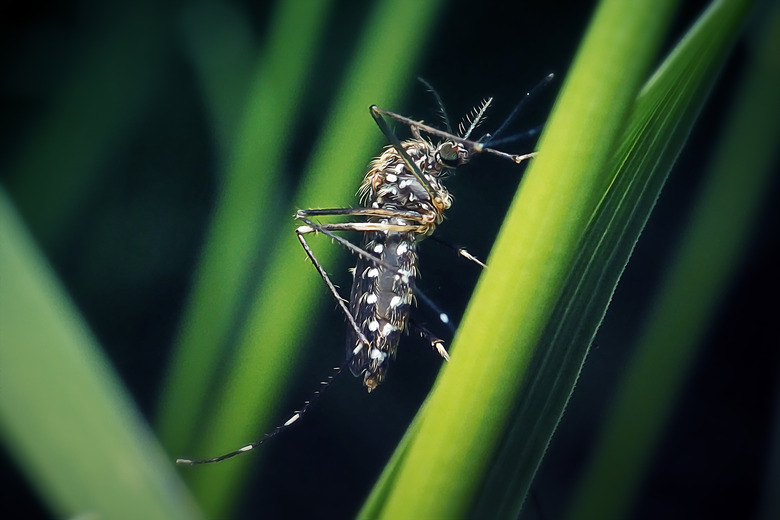Physical Address
Suite 5, 181 High Street,
Willoughby North NSW 2068
Physical Address
Suite 5, 181 High Street,
Willoughby North NSW 2068

Your home and garden can make a perfect hiding spot for numerous small insects. Researchers estimate that over 900,000 different insect species exist today. While not all of those small bugs might make their way into your home, plenty of tiny insects commonly live in or near areas of human habitation.
Hundreds of thousands of small insect species live on our planet. However, several groups frequently live close to our homes and within our cities. A few common types of small bugs include fleas, ants, mosquitoes and flies. Many different species exist within those groups, some impacting humans and pets as transmitters of disease.
Scientists estimate there are about 120,000 different species of flies – and that’s a conservative estimate! Typically viewed as pests, flies commonly make their way into homes. Most species feed or lay their eggs in garbage, feces and other organic material. Some species of flies can potentially spread disease. However, these insects also provide important prey to other insects, birds, reptiles and amphibians.
Common fly species include:
•House fly (Musta domestica) – Non-biting, but transmits disease.•Black blow fly (Phormia regina) – Non-biting, reproduces in carrion.•Bluebottle fly (Calliphora spp.) – Non-biting, reproduces in carrion.•Cluster fly (Pollenia spp.) – Non-biting, parasitizes earthworms.•Fungus gnats (various species) – Non-biting, attracted to houseplants.•Fruit/Vinegar fly (various species) – Non-biting, smallest household flies.•Moth fly (various species) – Non-biting, attracted to drains and sinks.•Deer fly (Chrysops discalis) – Biting, transmits tularemia.•Horse fly (Tabanus spp.) – Biting, larger than deer fly.•Biting midges (Ceratopogonidae spp.) – Biting, also known as “no-see-ums.”•Fairy fly (Dicopomorpha echmepterygis) – Biting, smallest known insect.
Similar to biting flies, mosquitoes might hold the mantle for the most unwanted biting pest. These tiny bugs not only pose a nuisance but also transmit diseases. Globally, malaria transmission is a huge problem with uncontrolled mosquito populations. Mosquitoes also transmit West Nile virus, Dengue, Zika virus and more.
As is the case with most pests, mosquitoes do provide an important food source to a variety of animals such as bats and birds. Additionally, of the over 200 mosquito species in the United States, only 12 species transmit diseases to humans.
Common disease-transmitting mosquito species in the United States include:
•Aedes aegypti•_Culex pipiens_•_Culex tarsalis_•_Culex quinquefasciatus_•_Anopheles_ freeborni•_Anopheles_ quadrimaculatus
Like most small insects, numerous ant species live around the globe and a handful make their way into our homes. These tiny insects vary in behavior, and most pack a painful bite or sting if threatened. As is the case with all small insects, many other creatures feed on ants.
Common household ant species include:
•Fire ant (Solenopsis invicta) – Aggressive invasive species.•Carpenter ant (Campanotus species) – Nocturnal wood-loving species.•Acrobat ant (Crematogaster species) – Lifts their hind end up in a defensive posture.•Pharaoh ant (Monomorium pharaonis) – Very tiny insect, frequently found indoors.•Crazy ant (Paratrechina longicornis) – Moves very swiftly and erratically.•Odorous house ant (Tapinoma sessile) – Attracted to sweet foods.
Rivaling mosquitoes in their peskiness, the biting, bouncing flea commonly infests homes. These tiny bugs can transmit a number of diseases, including typhus, cat scratch disease, tapeworm and plague. Fleas commonly infect household pets such as dogs and cats.
ofthe_us.html’>Common flea species in the United States include:
•Cat flea (Ctenocephalides felis)•Dog flea (Ctenocephalides canis)•Ground squirrel flea (Oropsylla montana)
•Oriental rat flea (Xenopsylla cheopis)
You might also come across other small “bugs” in or near your home. However, not all of these creatures are true insects. For example, researchers place both spiders and ticks in the taxonomic class Arachnida. Scientists place insects in the taxonomic class Insecta. Though many people refer to all manner of creepy-crawlies as tiny insects, only members of the class Insecta are true insects.